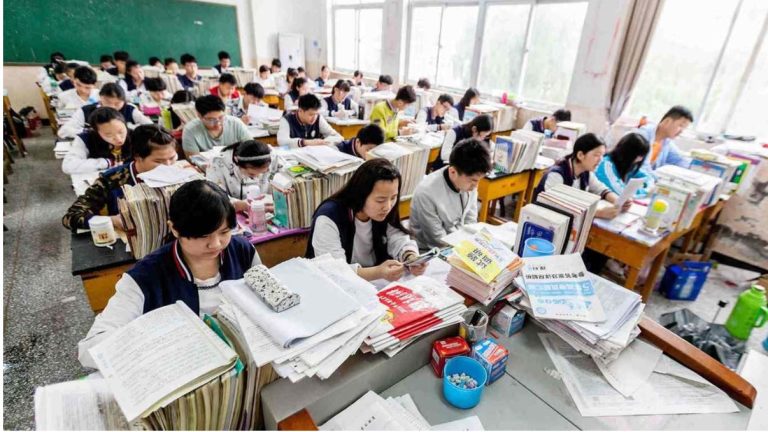China’s Green Revolution: Powering the World’s Sustainable Future
Beijing, China – China is not merely participating in the global green transition; it is actively leading it, demonstrating an unparalleled commitment to sustainable development through massive investments and groundbreaking innovations. With ambitious targets to reach peak carbon emissions before 2030 and achieve carbon neutrality before 2060, the nation is rapidly transforming its industrial landscape and setting a new global benchmark for ecological stewardship. This comprehensive shift is not only reshaping China’s economy but also providing critical solutions and driving down costs for sustainable technologies worldwide.
Unprecedented Scale and Speed in Green Industrialization
China’s approach to the green transition is characterized by its sheer scale and speed. The country has poured more than twice as much into its green transition in 2023 than any other nation, fostering an environment where new industries flourish and a new generation of energy infrastructure is built at an unmatched pace [1]. This robust investment framework has incentivized companies to significantly increase research and development, leading to a nearly 70% surge in expenditure between 2018 and 2023 [1]. Such dedication to innovation is further supported by China’s position as home to three of the five biggest science and technology clusters globally, enabling a deep pool of expertise to develop cutting-edge green energy solutions.
The impact of these innovations is felt far beyond China’s borders. From the widespread adoption of electric vehicles (EVs) on its own streets to the provision of affordable solar panels in rural Zimbabwe, China is effectively creating a roadmap for sustainable development on a global scale [1].
Dominance in Key Green Technologies:
- Electric Vehicles (EVs) and Batteries: China holds a commanding position in the EV battery market, with Chinese manufacturers accounting for a 60% global market share. In 2023, their exports grew by an impressive 30% year-on-year, underscoring their critical role in the global EV supply chain [1]. The sight of EVs, identifiable by their bright green license plates, is becoming increasingly common, symbolizing a profound shift in urban mobility.
- Green Hydrogen: The nation is also a frontrunner in low-emission hydrogen technology, a residue-free energy source. China hosts the world’s largest green hydrogen project and approximately 40% of the globe’s hydrogen refueling stations, supporting a rapidly growing fleet of hydrogen fuel cell vehicles [1].
- Solar and Wind Energy: China’s advancements in renewable energy generation are equally striking. In 2023 alone, the country commissioned as much solar photovoltaic capacity as the entire world did the previous year. Furthermore, it was responsible for 75% of global wind farm installations [1]. This rapid expansion has significantly driven down global green energy costs, making sustainable solutions more accessible and affordable for billions of people.
Trend Analysis: A Dual Imperative of Security and Sustainability
China’s green transition is driven by a dual imperative: enhancing energy security and achieving ambitious environmental targets. This approach is shaping several key trends:
- Strategic Self-Reliance: While contributing to global green initiatives, China is also focused on building self-sufficiency in critical green technologies. This reduces reliance on external supply chains and bolsters national energy security, a lesson learned from geopolitical complexities.
- Innovation-Driven Growth: The massive investment in R&D is transforming China into a hub for green technology innovation. This trend is not just about manufacturing but about leading in the development of next-generation sustainable solutions.
- Global Green Enabler: By producing affordable green technologies at scale, China is inadvertently (or intentionally) enabling other nations, particularly developing ones, to meet their emission-cutting targets. For instance, China supplied 89% of solar PV equipment by value to New Zealand in 2023, a country aiming for net-zero emissions by 2050 [1]. This positions China as a crucial partner in global climate action.
- Economic Restructuring: The green transition is a core component of China’s broader economic restructuring, moving away from heavy industry towards high-tech, service-oriented, and environmentally friendly sectors. This shift is designed to ensure more sustainable and higher-quality economic growth in the long term.
Challenges and the Path Forward
Despite the impressive progress, China’s green transition faces inherent challenges. The sheer scale of its economy and population means that achieving carbon neutrality requires monumental effort and continuous innovation. Balancing rapid industrial growth with environmental protection, managing the transition of millions of workers from traditional to green industries, and ensuring equitable access to green technologies across its vast territory are complex tasks.
However, the commitment from the highest levels of government, coupled with the dynamism of its private sector, suggests that China is well-equipped to navigate these complexities. The World Bank’s China Economic Update for June 2025 highlights that carbon emissions declined amid accelerated growth in renewable energy production, indicating the effectiveness of current strategies [2]. The report also notes that manufacturing jobs have benefited from strong exports and policy support, including in green sectors, though they face growing external risks [2]. This underscores the need for continued policy support and strategic adaptability.
Conclusion: A Vision for a Greener Tomorrow
China’s green revolution is a testament to its strategic vision and capacity for large-scale transformation. By aggressively pursuing innovation in EVs, renewable energy, and green hydrogen, and by making these technologies accessible globally, China is not only securing its own sustainable future but also accelerating the world’s transition to a greener economy. While the journey is ongoing and challenges persist, China’s unwavering commitment and remarkable achievements position it as an indispensable force in the global fight against climate change, offering hope and practical solutions for a more sustainable planet. The trends indicate a future where China’s green leadership will continue to expand, influencing global environmental policy and technological development for decades to come.
References
[1] World Economic Forum. (2025, January). Why China matters to the world’s green transition. Retrieved from https://www.weforum.org/stories/2025/01/why-china-matters-to-the-worlds-green-transition/
[2] World Bank. (2025, June). China Economic Update (June 2025). Retrieved from https://thedocs.worldbank.org/en/doc/8ae5ce818673952a85fee1ee57c3e933-0070012025/original/CEU-June-2025-EN.pdf






